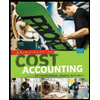a) Determine a transfer price using the general rule. b) How would the transfer price change if the assembly division had no spare capacity? c) What transfer price would you recommend if there was no outside market for the transferred component and the assembly division had spare capacity?
Spark Ltd has two divisions, assembly and electrical. The assembly division transfers partially completed components to the electrical division at a predetermined transfer price. The assembly division’s standard variable production cost per unit is $550. This division has spare capacity, and it could sell all its components to outside buyers at $680 per unit in a
Required:
a) Determine a transfer price using the general rule.
b) How would the transfer price change if the assembly division had no spare capacity?
c) What transfer price would you recommend if there was no outside market for the transferred component and the assembly division had spare capacity?
d) Explain how negotiation between the supplying and buying units may be used to set transfer prices. How does this relate to the general transfer pricing rule? (\ maximum 200 words)
Trending now
This is a popular solution!
Step by step
Solved in 4 steps with 3 images









